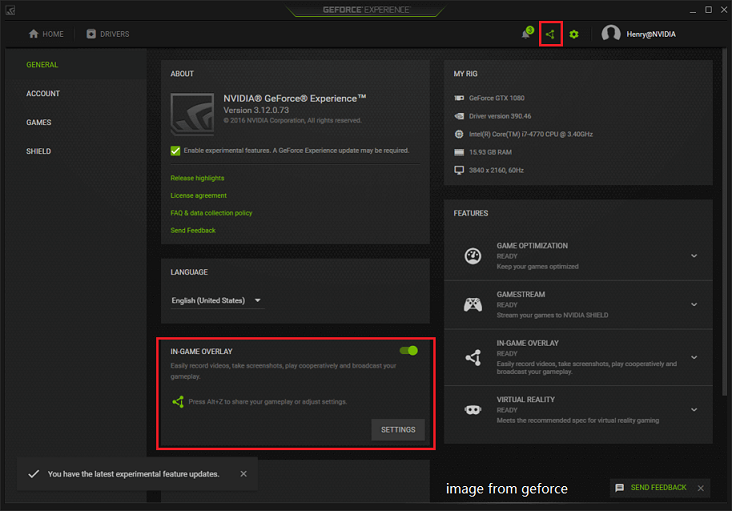

- #How to setup virtual audio cable for shadowplay for free
- #How to setup virtual audio cable for shadowplay drivers
- #How to setup virtual audio cable for shadowplay driver
- #How to setup virtual audio cable for shadowplay software
You can click the Test Speake r button to send audio into OBS and make sure you are seeing levels for the audio. An easy way to test if everything is working can be done within Zoom’s settings area under Audio. You can do this by opening an Audio Input Capture source and selecting Cable Output. Next, inside of OBS, you will want to create a microphone input to bring the audio from Zoom into OBS. You have the option to mix audio by reducing the volume of each input that is being sent into the virtual cable. Inside the filter select the CABLE Input option. Find the audio sources you would like to send into Zoom and apply the Audio Monitor Filter. The Audio Monitor plugin adds an important Audio/Video Filter to OBS which allows you to output audio from any number of sources. In order to send audio out of OBS you will need a plugin called Audio Monitor. This will allow you to send your microphone audio into Zoom using the virtual CABLE Input and receive audio into Zoom using the CABLE Output. Inside of Zoom, you can select CABLE Input for your microphone and CABLE Output for your speaker. The next time you open Zoom or a similar application you will see new virtual audio cables for input and output inside Zoom when you open the microphone and speaker area. Once they have been installed on your computer, you should restart. The default installation package includes two virtual audio cables, because you may require one for sending audio and one for receiving audio.
#How to setup virtual audio cable for shadowplay drivers
The VB-CABLE drivers are donationware, so they will ask you to make an optional donation to the developers.

#How to setup virtual audio cable for shadowplay for free
You can download two virtual audio cables for free from for your Mac or Windows computer.

Using virtual audio cables allows you to enhance the audio coming in and out of OBS with audio plugins and tools that are not available in many video communications tools.

By using virtual audio cables, it is possible to record both audio and video from applications such as Zoom and Microsoft Teams. OBS does not offer built-in virtual audio cable support at this time and therefore, you will need to download virtual audio cables to send audio from OBS to other applications on your computer. Setting up virtual audio cables to work with Zoom and OBS is more complicated than using the built-in virtual camera feature.
#How to setup virtual audio cable for shadowplay software
Using the Start Virtual Camera button inside of OBS, you can send the video directly from your OBS output to any software that is using the OBS Camera webcam input.Ĭonnecting OBS and Zoom with virtual audio cables
#How to setup virtual audio cable for shadowplay driver
The latest version of OBS now includes a usable USB webcam driver by default which you can select inside of any software that uses webcams. Zoom does offer some visual enhancements such as blur effects and filters, but OBS offers much more flexibility. One of the most popular ways to use a virtual webcam output from OBS is with software such as Zoom. Use cases for virtual audio and video connections vary widely. These virtual audio and video connections allow you to use OBS with any software that leverages a standard webcam and microphone input. OBS is also capable of using virtual audio cables to connect audio from OBS to other applications on the same computer. OBS is capable of outputting a virtual video camera which can be used with software like Zoom as the webcam input. This is where virtual video and audio cables come into play with OBS. Many people who use video communications software, would like more control over their audio and video, but only have the ability to use a webcam and microphone as audiovisual inputs. OBS has become a popular production solution for people who use video communications software such as Microsoft Teams and Zoom.


 0 kommentar(er)
0 kommentar(er)
